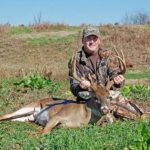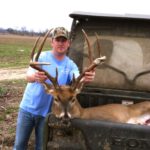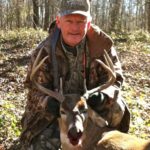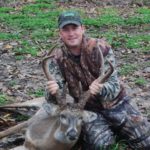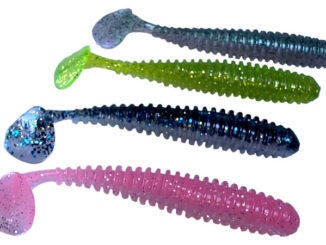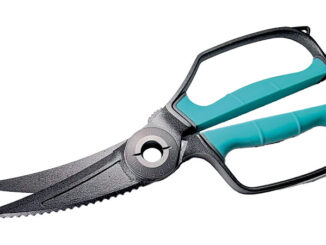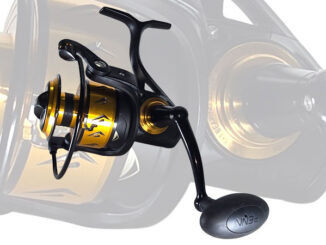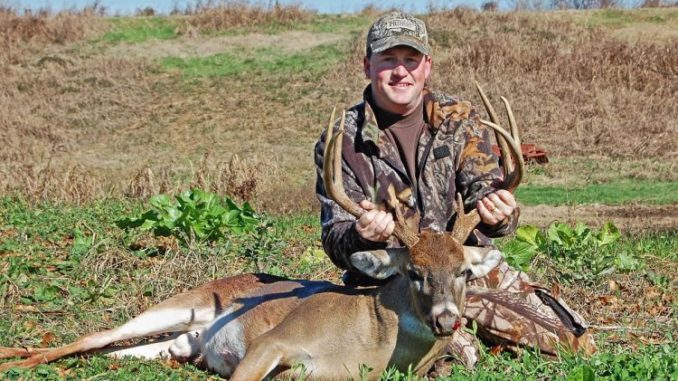
This Monroe hunter has big bucks figured out, and he’s willing to help others learn his bowhunting tactics.
There’s an old episode of the TV show “Gunsmoke” in which a Dodge City resident returns to his home with a load of stolen loot. But in “A Man Called Smith,” all his plans and efforts lead to nothing but trouble.
There’s a man named Smith in Monroe who often returns to his favorite home woods in Madison and Richland parishes.
And it is almost always a load of trouble, too — for the big whitetail deer.
The 38-year-old Brad Smith depends on a bow instead of a six-shooter, and he already has seven deer mounted that score 132 or better.
He could have a lot more.
Smith’s success is born of a love to get in the deep woods, and leave the hustle and bustle of daily life. His love of archery began when his uncle Pat gave him his first bow when he was still in grade school.
“I used to shoot that bow in the backyard well before I was old enough to hunt,” he said. “I had two arrows: I’d shoot them and lose them, and then go buy two more. That got me loving to shoot a bow.
“Then my folks got me one for Christmas that I could hunt with when I was in the seventh grade, and I started going with my dad.”
He began going to that camp at an opportune time.
“Our club was pushing for more areas to just bowhunt, and I fell in love with it,” Smith said. “To me archery is a much more rewarding way to take deer.
“Once you take a big one (with archery equipment), it’s just addictive because it is so up close and personal.”
Picking the perfect spots to hunt changes from year to year with the habitat, but Smith said he doesn’t have to start over each season.
“I’m lucky, in a sense, because I hunt in the same woods now that I have hunted since I was a child,” he explained. “I’ve got a feel for the woods. When I’m scouting, I just look for two things, really.
“First, a lot of good deer sign: That’s usually rubs and scrapes or just heavily used trails. Then I look for some sort of transition area where the woods make a change.”
That could be where open timber meets a thicket or a stand of smaller timber changes to a stand of big trees.
He also has access to big greenfield areas with food plots. Sometimes picking a place near those open fields is tricky, but again, he looks for something different: Even a line of briars or cocklebur bushes can be used as a little bit of cover for a big deer moving from one area to another.
“I’ve found that it doesn’t have to be much, but big deer do not like to just walk through the open woods,” Smith said. “The edges of thickets are great places to scout, where big deer are moving to and from feeding to bedding areas.
“They also tend to stay around those when they are chasing does later in the season.”
Most of the areas Smith hunts are hardwood stands — some near the Mississippi River in Tensas Parish that are old and tend to be wide open.
But there are always thickets and other habitat changes.
He has even taken big bucks walking the edges where oak flats meet cottonwood trees or where the change is simple like from bitter pecan to hackberry.
Big deer just like some sort of change in cover to make them feel safer when they are on the move, he says.
The main thing that makes him successful — besides a lot of scouting — is something that he can’t see at all. And it changes with every hunt.
“It’s the wind,” Smith said. “I hunt exclusively from climbing stands, and you have to first know where the deer will be moving and, second, put your stand where your face is in the wind.
“I’m telling you: If you let the wind carry your scent to where the deer is, he’s gone. I’ve seen great big bucks even in the heat of the rut scent me, stop in their tracks, and leave the doe and get out of there.”
Smith advised hunters not to push the envelope with your scent and the wind. You might get lucky once in a while, but most often you’ll spoil that day’s hunt. And maybe more.
“If a mature big buck scents you, you can bet he will be gone immediately,” he said. “And the worst thing is, if that happens, he’s probably not going to show himself for days or weeks — maybe not for the rest of the season — during daylight hours.
“These big bucks have keen senses and instincts, and are smart. Super smart.”
The die-hard bowhunter also said it’s important to be quiet as possible going into the woods and setting up. If you drive in, park as far away as you can and still walk in. Allow plenty of time and don’t rush.
And the first thing you should do when your stand is set is to scan the area with a range finder.
“You need to know how far certain trees or logs or bushes are before the deer come out,” Smith explained. “Know in your mind how far the shot is before the big one walks out so you don’t have to fumble around with a range finder then.”
Trophy bucks are constantly changing habits during the season. During the early months, you often find bucks running together. Then they separate and finally, by the end of the season, they are alone chasing does or recovering from the rut.
“Finding big deer early where we hunt starts by getting on trails where they are going to persimmons or water oaks that are dropping acorns early,” Smith said. “We’ve also got a lot of bean trees that are excellent food sources. Sometimes in October you might see six or eight bucks together, from a spike in the front all the way to a 12-point in the back.
“By early November they are breaking up. When they get out of their bachelor groups, it gets harder to find the big ones by themselves. By the end of November and December, they get in the rut and it’s easier to pattern them again.”
Ensuring he gets the shot begins long before the season, when he tunes his bow and practices. A lot.
“I start by going to a range or sporting goods store and shoot through paper,” Smith said. “I make sure the bow is tuned; then I practice at 40, 30 and then 20 yards.”
But his goal is to be able to split arrows.
“I don’t shoot at pie plates or big targets,” Smith said. “I start by shooting at silver dollar-sized stickers on the target, even at 40 yards.
“Learn to aim at small spots. Aim small, miss small. I believe that.”
Smith’s favorite big-buck gear
A climbing stand, a bow and arrow, and a bag of buck treasures is all Brad Smith needs in his quest of one more trophy deer.
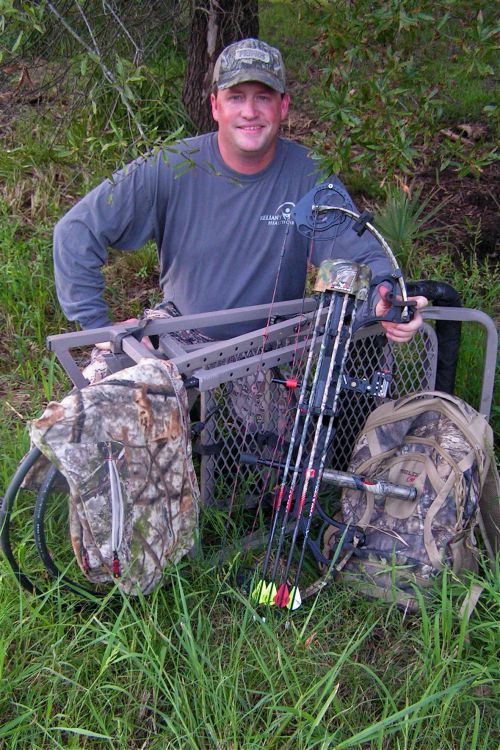 Here’s Brad’s prescription for standard big buck chasing equipment:
Here’s Brad’s prescription for standard big buck chasing equipment:
• Stand: A good safe stand is his most important piece of equipment because, no matter what happens on a hunt, he wants to be able to come back on more hunts.
He uses from a Treewalker climbing stand because it is a light aluminum model, has good teeth, locks solidly on trees and is comfortable enough to sit in for hours.
• Bow: Brad goes with a PSC X-Force Dream Season EVO bow he has had for five years. He doesn’t like to change bows often because it helps him be more consistent and comfortable.
• Arrows: He mainly shoots Rage Hypodermic mechanical blade arrow, which are consistent in flight, and make huge entry and exit wounds. But his main suggestion for arrows is to make sure they have enough spine for the speed of the bow with which you are hunting.
• Scent: “I don’t really use a lot of scent or cover products,” Smith said. “I just try to use the wind (so) I don’t need them.
“I do carry a Thermocell that gives off some odor, but I have never had it spook a buck that I know of. It’s unbelievable. And I never go to the woods without it in October or November.”
Where he hunts, they’ve also got trophy mosquitoes.
• Bag of tricks: Well, they aren’t really tricks, but he carries a well-stocked backpack that includes a good hunting knife and surgical gloves in case he has to dress a big buck in the field.
He also takes a Primos range finder and a good pair of binoculars, a safety belt (which he always wears), several flashlights and extra batteries, a portable phone charger and some bright eyes and flagging tape.
If there is a trick in his bag, it’s actually on his iPhone. He has the Avenza App, a geospatial PDF reader that works by satellite whether you have cell service or not: It easily connects you with spatially referenced maps to help you mark and return to exact spots you in the woods.
Deer hunting is a family affair
Not many second-graders would be excited to move from one end of the state to the other, but it was OK with Brad Smith.
His father, Dr. Mike Smith, relocated their family back home to Bastrop from Rayne some 30 years ago, and the younger Smith was glad to be moving closer to his grandfather J.W. Smith and his uncle Pat Smith because all they talked about was deer hunting.
“I was hooked on deer hunting at an early age, and my family is the reason why,” Brad Smith said. “My earliest trips with them are great memories. My first deer hunt was with a .410 shotgun and one single slug shell.”
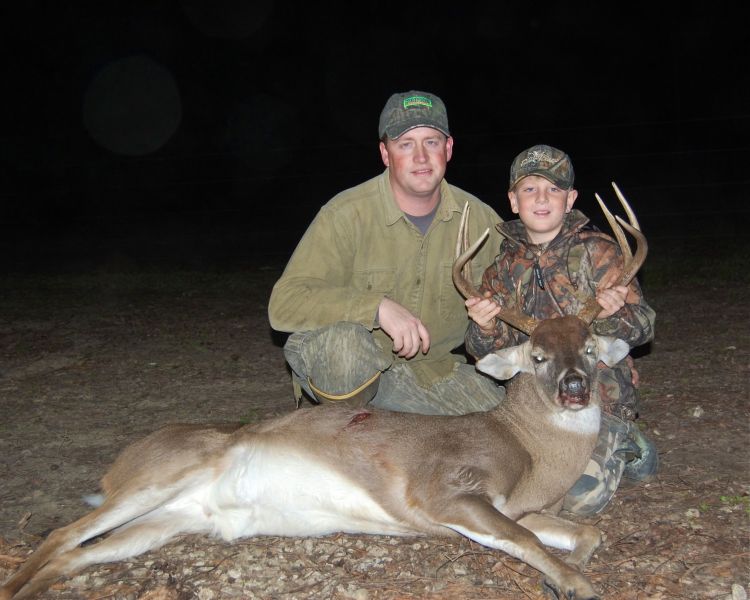 His Uncle Pat, who gave him his first bow, lost his eyesight and had to give up hunting. But they never quit talking about it — constantly.
His Uncle Pat, who gave him his first bow, lost his eyesight and had to give up hunting. But they never quit talking about it — constantly.
Now he understands how they felt watching him grow up hunting.
“My kids — Allen, age 14, and Hannah, age 12 — have also been drawn to hunting,” Smith said. “They’ve already killed good deer, and Allen got his first big one with a bow last year. He’s just like me.
“That’s probably the most exciting thing for me now, watching them. I get more excited about it, more nervous about it, than they do. Hannah is all girl, but when she goes hunting, she sits still and quiet and doesn’t need an iPhone. She’s got more patience for it than me. What a great way to spend quality time with your teenage kids. I wouldn’t trade it for anything, even when they want to go every weekend.”
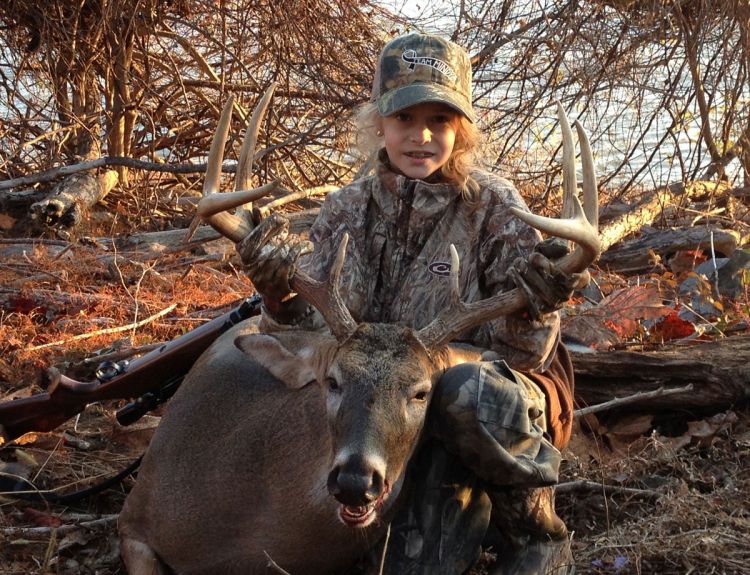
And, of course, it doesn’t hurt to have an understanding wife who approves and encourages all that away-from-home time.
Smith’s deer-hunting mentor
In addition to his family, Brad Smith was blessed with a mentor who taught him something about deer hunting more important than any trophy deer.
“There was a man in our hunting club named Wes Taylor that was just the best deer hunter I think I ever met,” Smith said. “Every year he would kill two or three just huge bucks. He was a bowhunter. When I first met him, he still shot a recurve bow for years.”
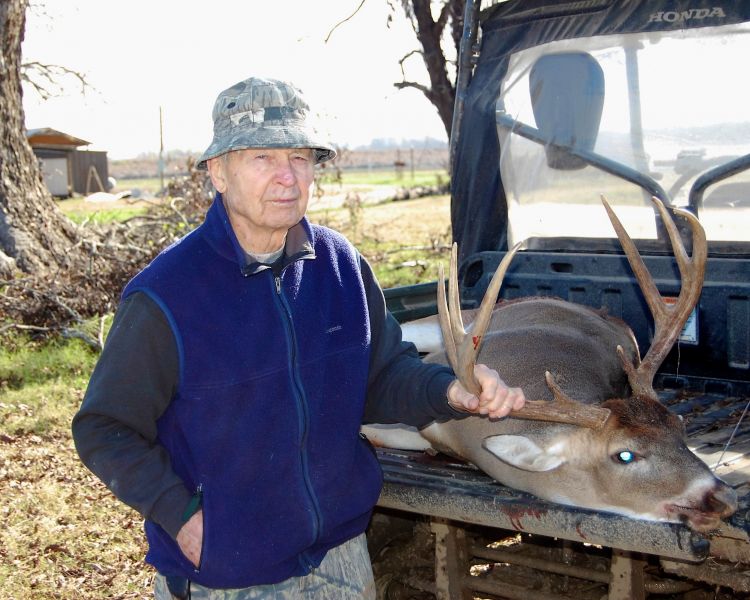 Smith spent time with him up until Taylor passed away in 2015.
Smith spent time with him up until Taylor passed away in 2015.
“He was 89 years old, and he hunted right up until near the end,” Smith said. “I would pick him up in the evening, we would go hunting and then I’d take him home. I learned about hunting from him.”
But hunting isn’t the most important thing Taylor taught Smith.
“I’ll probably never be the hunter that he was, but he was the kind of person that I hope one day I will be able to emulate in other ways,” Smith said. “When he was 70 and 80 years old, he’d still hunt circles around people. He was fun to be around (and) helped teach a lot of people how to be better hunters.
“And he always looked out for the younger hunters. He was a Tomcat Fighter pilot in World War II. He never ran out of unbelievable stories about that and hunting. He never seemed to tell the same one twice. He was a great hunter. He was a great person.”
